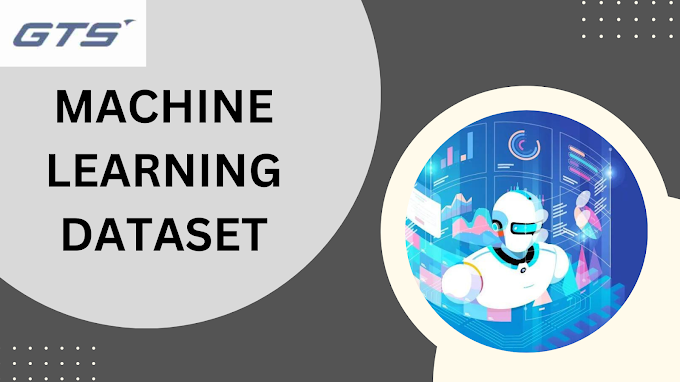Navigating the World of Machine Learning Datasets

Introduction:
In the realm of machine learning, data reigns supreme. It's the fuel that powers algorithms, the foundation upon which artificial intelligence (AI) builds its understanding, and the cornerstone that supports all predictions and insights. In this exploration, we delve into the diverse and intricate world of Machine Learning Dataset, uncovering the intricacies of sourcing, preparing, and utilizing these vital resources.
The Essence of Machine Learning Datasets
Machine learning datasets are more than mere collections of numbers and facts. They embody the very problems and phenomena that AI seeks to understand, predict, and interact with. At their core, these datasets can be classified into various types, each serving a unique purpose in the machine learning landscape:
- Supervised Learning Datasets: These are labeled datasets where each input data point is paired with an output label, serving as a guide for predictive models.
- Unsupervised Learning Datasets: In these datasets, no labels are provided, and the model strives to find inherent structures or patterns within the data.
- Reinforcement Learning Datasets: Here, the dataset is generated through interactions of an agent with an environment, focusing on learning through trial and error.
Sourcing Machine Learning Datasets
The quest for the perfect dataset begins with sourcing. Data can be obtained from a myriad of sources, each with its own characteristics:
- Public Datasets: Repositories like UCI Machine Learning Repository, Kaggle, and Google Dataset Search offer a plethora of datasets across various domains.
- Government and Institutional Data: Many governments and institutions publish datasets for public use, offering a wealth of structured information.
- Generated Data: Sometimes, synthetic data generated through simulations or algorithms can serve as a valuable resource, especially in domains where real data is scarce or sensitive.
Challenges in Dataset Preparation
.png)
Once a dataset is sourced, the journey is far from over. Preparing a dataset for machine learning is a meticulous process that involves several steps:
- Data Cleaning: This involves handling missing values, correcting errors, and removing duplicates, ensuring the data's quality and reliability.
- Data Transformation: Converting data into a format suitable for machine learning models often requires normalization, encoding categorical variables, and feature engineering.
- Data Splitting: The dataset is usually split into training, validation, and testing sets to facilitate model training and evaluation.
Ethical Considerations and Bias
A critical aspect of working with datasets is acknowledging and addressing biases. Datasets can inadvertently contain biases that reflect societal, historical, or sampling prejudices. Ethical machine learning demands constant vigilance to identify and mitigate these biases, ensuring models do not perpetuate or amplify unfairness.
Privacy and Security
With the increasing use of personal data, privacy and security considerations are paramount. Techniques like data anonymization, differential privacy, and secure data sharing protocols are essential to protect individual privacy while leveraging data for machine learning.
Popular Machine Learning Datasets
Several datasets have gained popularity in the machine learning community, often serving as benchmarks for model performance:
- ImageNet: A large visual database used for image classification and object recognition tasks.
- MNIST: A classic dataset of handwritten digits widely used for training and testing image processing systems.
- CIFAR-10 and CIFAR-100: These datasets contain thousands of labeled images divided into categories, useful for object recognition tasks.
- Natural Language Processing (NLP) Datasets: Datasets like GLUE and SQuAD offer a range of challenges in Text Data Collection understanding and question answering.
.png)
The Future of Machine Learning Datasets
As machine learning continues to evolve, so do the datasets that drive it. We're witnessing a trend towards larger, more complex datasets that capture a wider array of human experiences and phenomena. Additionally, the focus is shifting towards ethically sourced, unbiased data and methods that ensure privacy and security.
Conclusion
Machine learning datasets are the lifeblood of AI systems. They are not static entities but dynamic resources that evolve with advancements in technology, ethics, and data science methodologies. The key to harnessing the power of these datasets lies in understanding their nuances, addressing their challenges, and continuously striving for ethical and responsible use. In this exciting era of AI, datasets are not just tools for machine learning; they are windows into the vast possibilities of what machines can learn and achieve.
Elevating Business Growth with GTS.AI's Precision in Machine Learning Datasets
In essence, the strategic implementation of precise and well-curated machine learning datasets is a key accelerator for business growth, a principle that Globose Technology Solutions embraces wholeheartedly. By leveraging the power of meticulously prepared and accurate datasets, GTS.AI empowers businesses to unlock new insights, enhance decision-making, and drive innovation. This approach not only elevates the effectiveness of machine learning models but also ensures that businesses stay ahead in a rapidly evolving digital landscape. With GTS.AI's expertise in harnessing the true potential of machine learning datasets, businesses are well-positioned to experience transformative growth and sustained success.



Comments
Post a Comment